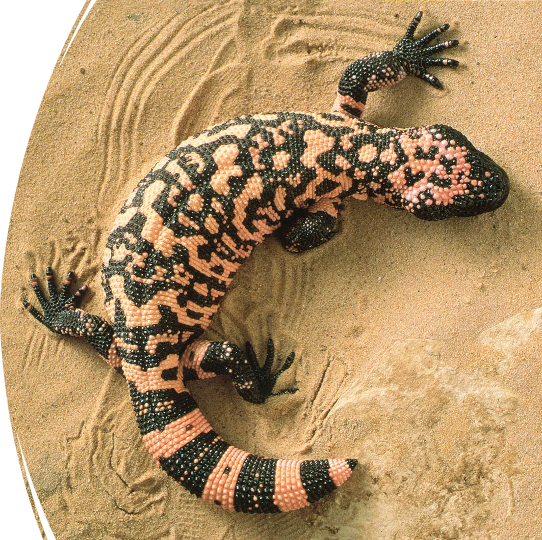Herpetology Exam 2: lizards
1/31
There's no tags or description
Looks like no tags are added yet.
Name | Mastery | Learn | Test | Matching | Spaced |
|---|
No study sessions yet.
32 Terms
Squamates
lizards and snakes
hemipenes
male snakes have 2 copulatory organs, located in tail
females don’t have
hemipenial retractor muscles pulls everted hemipenis back inside
like hollow balloon
sulcus: shallow canal for path for sperm
awns: little feelers, don’t know what for

Female eggs snakes
released from ovary, follicles called “ova”
enter infundibulum of the oviduct - where fertilization occurs
shelled in the oviduct- called eggs
can feel lumps of females
most clutches laid 25-30 days after prelay shed
limb reduction
fracture planes within vertebrae in lizards, between vertebrae in snakes
partial regeneration in ilzards, not snakes
lizard reproduction
20% viviparous
Obligate Parthenogenesis in 6 families & 1 snake
temperature sex determination in 12 sp lizards, no snakes
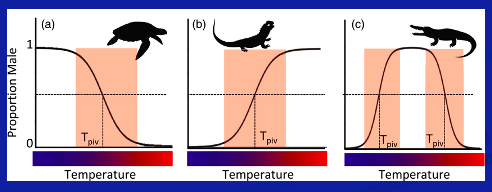
obligate parthenogenesis
asexual reproduction
an asexual reproductive strategy where organisms exclusively reproduce through females, developing offspring without the involvement of a male or fertilization
snakes produce asexually
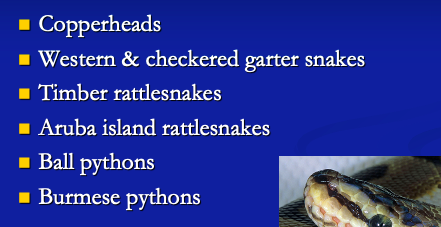
lizards
7,700 sp
basal split (iquania & scleroglossa)
teeth: chameleonsand agamids sisters have acrodont teeth
teeth

old world lizards
Agamidae (think aged …agamids…old world)
60 genera, 580 sp
mod-large, terrestrial
no limb reduction
africa, southern asia, austrailia
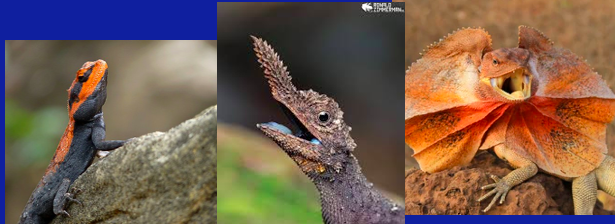
chamaeleons
chamaeleonidae
200 sp
most in madagascar
color change: light, temp, emotions
communication with conspecifics
unique skin with layers
crystals that quickly move around pignement
melanophores: (ouside) yellow/red —> blue —> white (inner)
laterally compressed bodies, flat to walk on twigs
zygodactylus feet, prehensile tail - gripping
eyes move independently (accomidation to measure distance not angle like us - good focusing
tongue: 2.5 length body, accelrator msucle on tepred hypoid

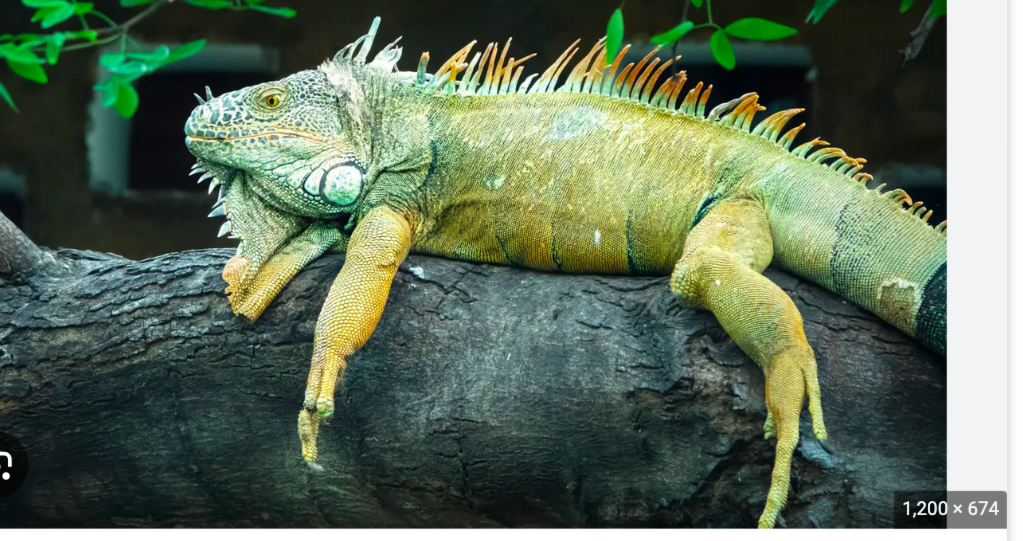
Iquana
iguanidae
38 sp, mod-lg size
americas, galapagos, west indies, figi (new world tropics)
young hang by adults: insectivores to vegetarian
eat feces of adults to innoculate gut with symbiotic bacteria from parents then switch to plants when stomach gets bigger
figi iquana
brachylophus
rafting to get out to islands - flood
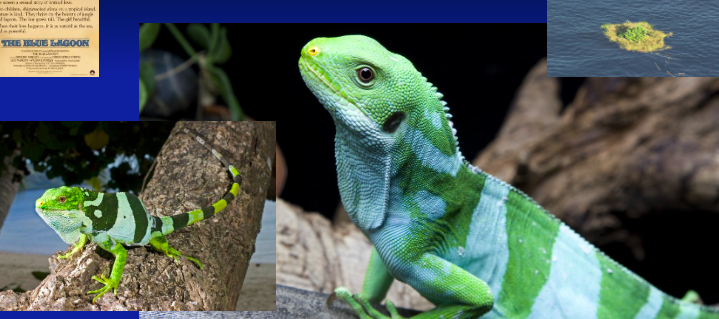
marine iguana
amblyribynchus cristatus
blunt face, eat algae on rocks
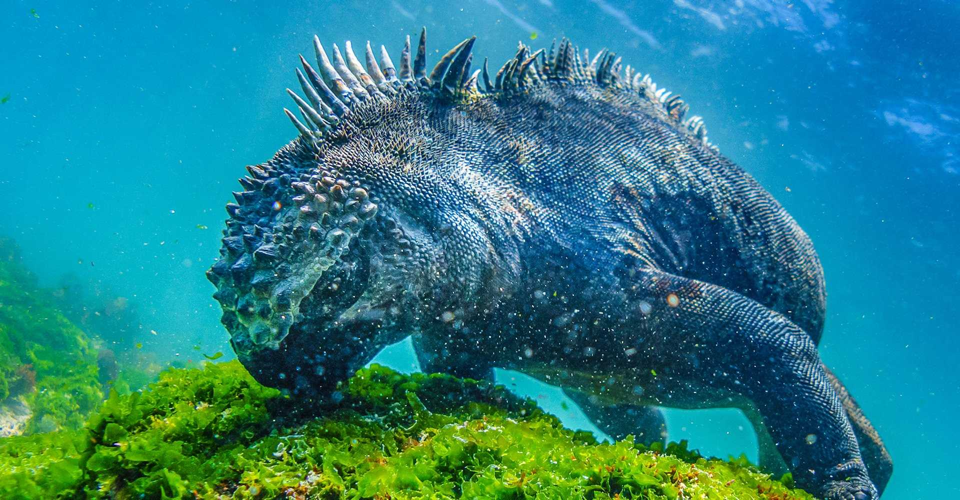
the anoles
dactyloidae (think…she dact on on my loidae til i anoled)
subfam of iguana
400 sp, mostly arboreal
diurnal, sit and wait predators
1 egg per week, continuously breen
males: dulaps on neck, do push ups
have pigment, not structural color
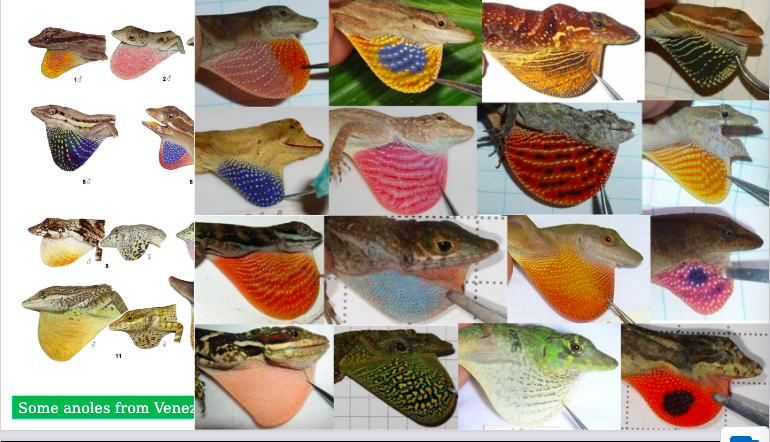
green anole
anolis carolinensis
florida and TX
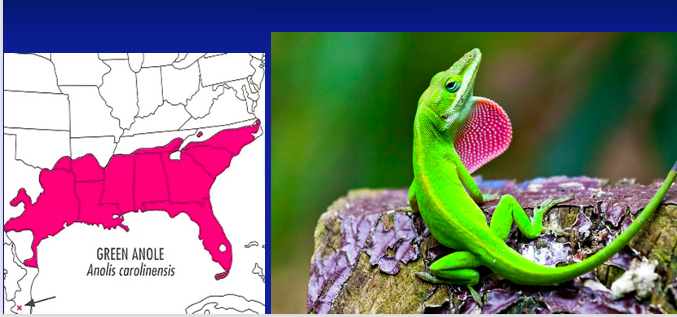
brown anole
anolis sagrei
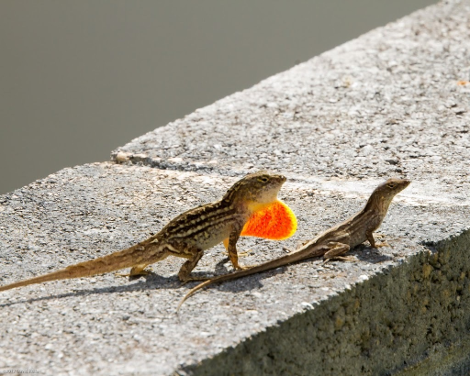
horned lizards
west/midwest USA
eats nonpoisonous ants
squirt blood out of eye for defense
colard lizard, new mexico
basiliscus: iagarto de jesus risto, walk on water
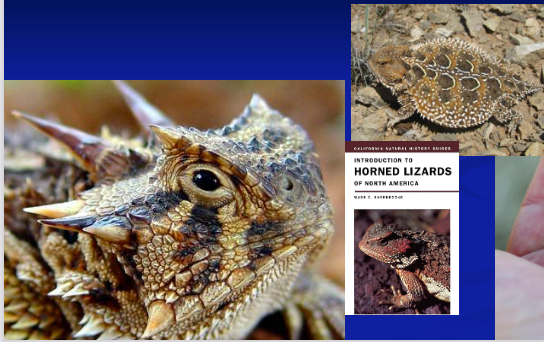
Species that used to be iguanias
Collard lizard
basiliscus: mohawk
igarto de jesus cristo: walks on water
wall climbing geckos
gekkonidae
1,000 sp, most of any lizard
drab, nocturnal, no eyelid, soft skin
vocal: click/chirp
almost all oviparous, 1-2 hard shell eggs, good for transport
defence: highly autotomic tail breaks easy, fragile skin flakes off easy
pantropical
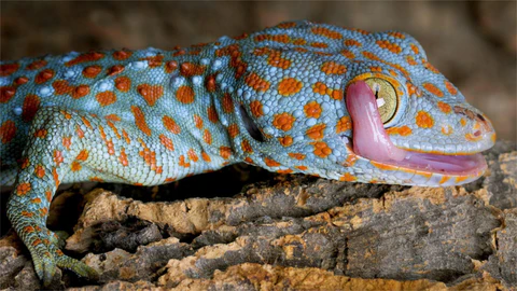
van der waal forces
surface area bc of hairs with microscopic hairs that share electrons and cling, have to ‘disengage’ to move

leopard gecko
have eyelids

day gecko
africa, madagascar, indian ocean islands
bright green, with reds, blues, yellows

racerunners/whiptails
teiidae
active, diurnal, 120+ sp
long, streamline body, long tail and hindlimbs
parthenogenesis in several
racerunner
small, granular scales
high body temp, FAST
N. america/S america
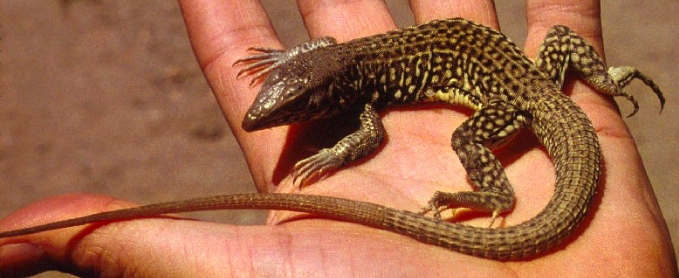
six-lined racerunner

Skinks
Scincidae
> 1500 sp
cosmopolitan
smooth, shiny scales with osteoderms
secrative dwellers/burrowers
short limbs/some limbless
babies have blue tails
worldwide
islands, deserts, rainforest
oviparous, guard eggs
45% viviparous
diurnal
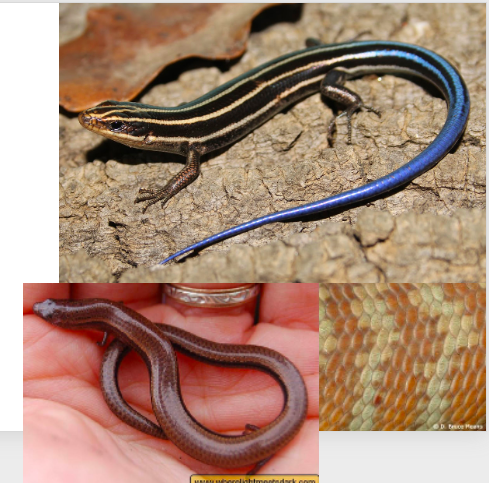
oviparous vs viviparous
Oviparous animals lay eggs, while viviparous animals give birth to live young
Legless lizards
Anguidae (think… alligators are angry)
110 species, widespread
grasslands, cloud/rain forest
diurnal, 70m - 1.3m
tails autotomize (break off) easily, limb loss common
Ophisaurus in midwest US
glass lizard
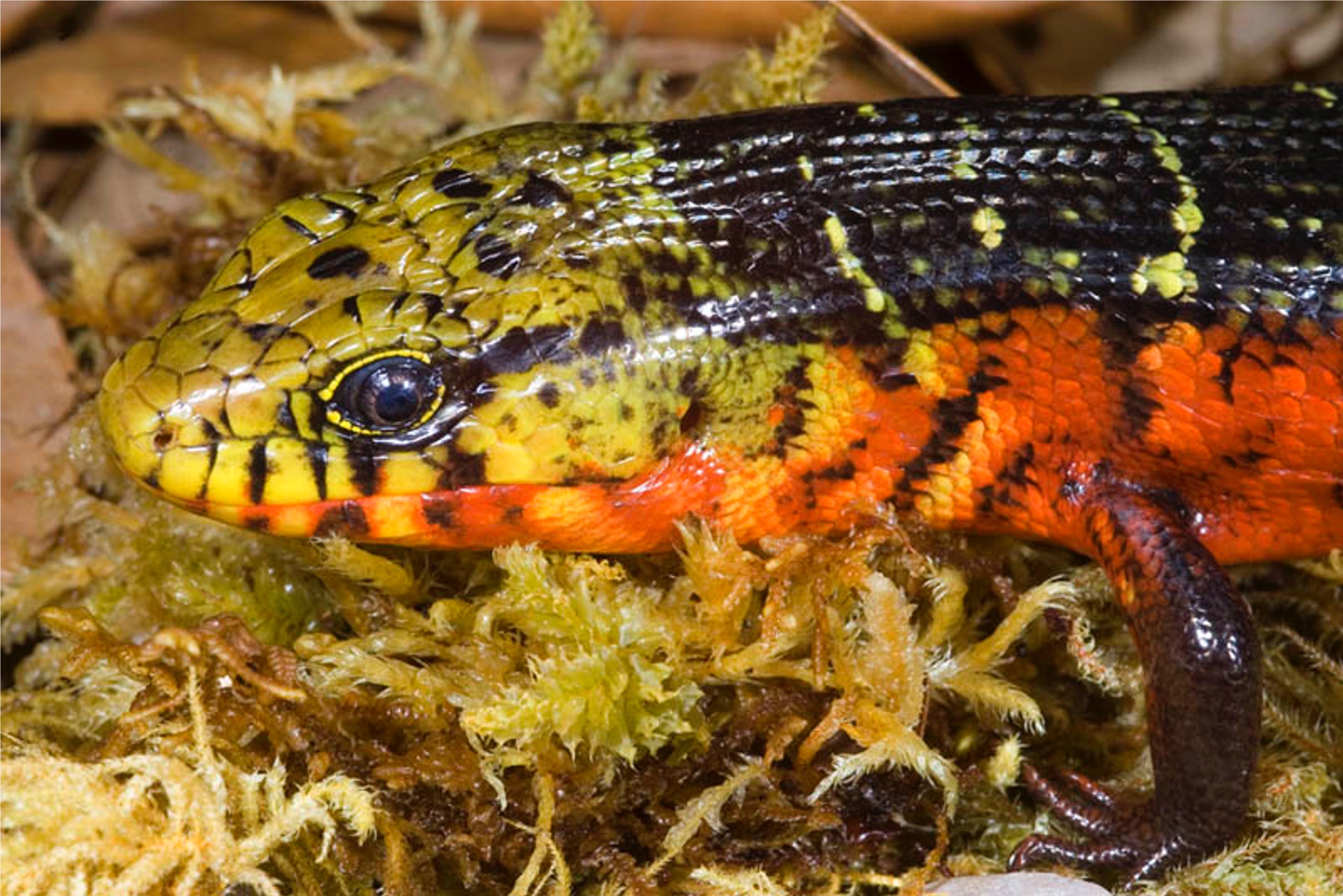
slender glass lizard
tail 2/3 of body length
snap off without being touches

Monitor lizard
varanidae (mrs. kipling monitors the vary crazy children)
75 sp
active foragers, forked tongue
Mrs. kipling
huge
serated teeth, slashing bites
endangered, apex predators
don’t always kill prey, die of sepsis
regurgitate horns
Gila monster and beaded lizard
helodermatidae
“sun skin”
only venomous lizards - venom glands along mandibles, chew prey
stout, fat tails, burrows
eat eggs, mammals, birds, lizards
central america
